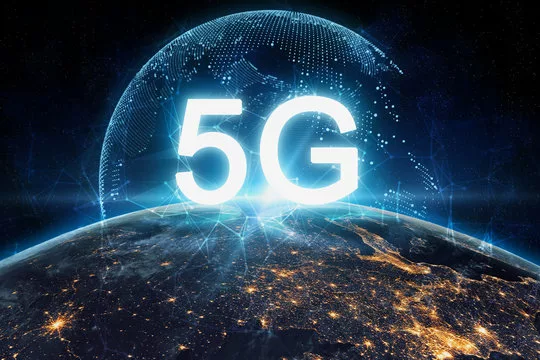Technology
The Rise of 5G Technology: Transforming Connectivity

Get ready to experience a revolution in connectivity. 5G, the fifth generation of cellular network technology, is here, promising to usher in an era of blazing-fast speeds, ultra-low latency, and a massive leap in network capacity. This comprehensive analysis delves into the core functionalities of 5G, explores its potential to transform various industries, and discusses the challenges and opportunities that lie ahead.
1. Unveiling the Power of 5G: A Technological Deep Dive
5G builds upon the foundation laid by its predecessors, 4G LTE, but offers significant enhancements in three key areas:
- Enhanced Mobile Broadband (eMBB): Imagine downloading an entire movie in seconds! eMBB delivers unprecedented download and upload speeds, enabling seamless streaming of high-definition and even 8K video content. This paves the way for immersive entertainment experiences and lightning-fast file transfers.
- Ultra-Reliable Low-Latency Communication (uRLLC): Latency refers to the time it takes for data to travel between two points. 5G boasts ultra-low latency, minimizing delays to near real-time. This is crucial for applications requiring instantaneous response times, such as autonomous vehicles, remote surgery, and industrial automation.
- Massive Machine-Type Communication (mMTC): The Internet of Things (IoT) is poised for explosive growth, with billions of connected devices generating massive amounts of data. mMTC empowers 5G networks to efficiently handle communication between a multitude of devices, paving the way for a more interconnected world.
These advancements are fueled by a combination of technological innovations:
- New Radio (NR): This new air interface technology forms the core of 5G networks, enabling higher frequencies and more efficient transmission of data.
- Network Slicing: Imagine a network carved into virtual slices! Network slicing allows for the creation of customized network configurations tailored to specific needs. This flexibility caters to diverse applications, each with its own requirements for speed, latency, and capacity.
- Millimeter Wave (mmWave) Spectrum: 5G utilizes higher frequency bands, including the mmWave spectrum. While these frequencies offer exceptional speeds, they have a shorter range, necessitating a denser network infrastructure with more cell sites.
2. A 5G-Powered Future: Transforming Industries and Redefining Experiences
The ramifications of 5G extend far beyond faster downloads. Let’s explore how 5G is poised to revolutionize various sectors:
- Smart Cities: 5G can empower cities to become smarter and more efficient. Traffic management systems can optimize traffic flow in real-time, while connected sensors can monitor environmental conditions and enhance public safety.
- Connected Cars: Ultra-low latency communication allows for real-time communication between vehicles and infrastructure, paving the way for safer and more efficient autonomous driving experiences.
- Remote Surgery and Healthcare: 5G’s capabilities enable remote surgery with minimal latency, allowing surgeons to operate on patients located far away. Additionally, remote patient monitoring and real-time data analysis can revolutionize healthcare delivery.
- Enhanced Entertainment: Imagine experiencing live concerts or sporting events from the comfort of your home with virtually no lag. 5G empowers immersive entertainment experiences like virtual reality (VR) and augmented reality (AR) with flawless streaming and real-time interaction.
- Industrial Automation: 5G’s reliability and low latency make it ideal for industrial automation. Factories can utilize connected machines, robots, and sensors to optimize production processes and enable real-time monitoring of machinery.
- The Rise of the Internet of Things (IoT): 5G’s ability to handle massive amounts of data efficiently is a boon for the IoT. Billions of connected devices can communicate seamlessly, facilitating automation, data collection, and smart applications in various sectors.
These are just a few examples, and the potential applications of 5G are vast and still evolving. As 5G infrastructure continues to expand, we can expect even more innovative applications and disruptive changes across industries.

3. Navigating the Road Ahead: Challenges and Opportunities
While 5G promises a transformative future, there are challenges to overcome:
- Network Infrastructure Development: Deploying a nationwide 5G network requires significant investment in infrastructure, including cell towers and fiber optic cables. Bridging the digital divide and ensuring equitable access to 5G requires strategic planning and investment.
- Device Compatibility: Not all devices are currently compatible with 5G networks. Consumers may need to upgrade their smartphones and other devices to take advantage of 5G capabilities.
- Security Concerns : Robust cybersecurity measures are essential to protect networks and devices from cyberattacks. Governments and the tech industry need to work together to establish strong security protocols for 5G networks.
- Health Concerns: There are ongoing discussions regarding the potential health risks associated with exposure to the higher frequencies used by 5G. More research is needed to address these concerns definitively.
4. A Collaborative Future: Unlocking the Full Potential of 5G
Despite the challenges, the potential benefits of 5G are undeniable. To unlock its full potential, collaboration between various stakeholders is crucial:
- Government and Policymakers: Governments can play a vital role in facilitating the deployment of 5G infrastructure by streamlining regulations and incentivizing investment. Additionally, they can address privacy concerns and establish robust cybersecurity frameworks.
- Telecom Companies: Telecom companies are at the forefront of 5G deployment. They need to invest in infrastructure development, ensure widespread network coverage, and offer affordable 5G data plans to consumers.
- Device Manufacturers: Device manufacturers need to develop a wider range of 5G-compatible smartphones, laptops, and other devices to make 5G technology accessible to a broader audience.
- Industry Leaders and Developers: Innovation is key to unlocking the full potential of 5G. Industry leaders and developers need to collaborate to create new applications and services that leverage the unique capabilities of 5G networks.
5. Conclusion: Embracing the 5G Era
The arrival of 5G marks a significant shift in the way we connect with the world around us. It promises faster speeds, lower latency, and the ability to connect an ever-growing number of devices. While challenges exist, the potential for innovation and positive transformation across various sectors is undeniable. By fostering collaboration between governments, telecom companies, device manufacturers, and developers, we can usher in a future powered by 5G, unlocking its potential to improve our lives, industries, and societies.
